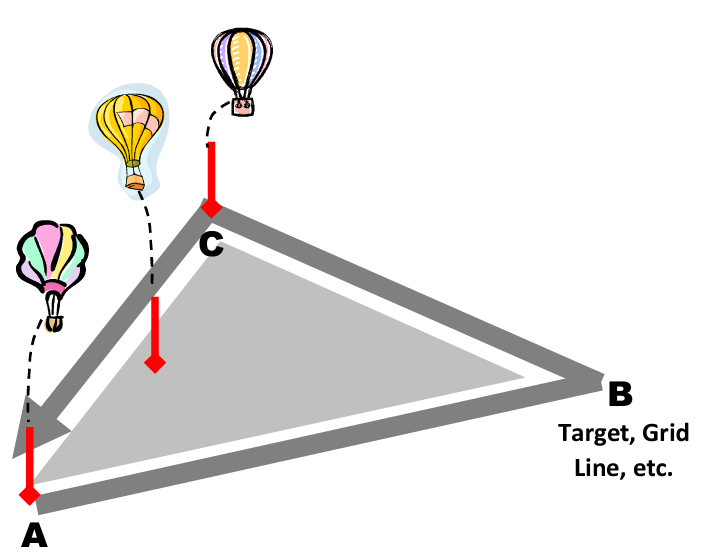MOST TIME TASK (MTT)
15.22 Competitors will attempt to fly across a given scoring area in the most amount of time (slowest speed).- Task Data: Boundaries of scoring area
- Result is elapsed time to cross the scoring area, measured from initial point of entry to exit point of scoring area. Greatest amount of time is best.
LEAST TIME TASK (LTT)
15.21 Competitors will attempt to fly across a given scoring area in the least amount of time.- Task Data: Boundaries of scoring area
- Result is elapsed time to cross the scoring area, measured from initial point of entry to exit point of scoring area. Least time is best.
3-D SHAPE TASK (3DT)
15.20 Competitors will attempt to achieve the greatest distance within a set airspace.- Task Data: a) Description of set airspace(s)
- The result is the accumulated horizontal distance between valid track points in the set airspace(s). Greatest result is best.
ANGLE TASK (ANG)
Competitors will attempt to achieve the greatest change of direction from a set direction. The change of direction is the angle between the set direction and line “A-B”.- Task Data: a) Description of points “A” and “B” b) Set direction (degrees) c) Minimum and maximum distances from “A” to “B”
- The result is the angle between the set direction and the line “A-B”. Greatest result is best.
MAXIMUM DISTANCE DOUBLE DROP (XDD)
Competitors will attempt to achieve two marks or valid track points far apart in the scoring area(s).- Task Data: a) Description of Scoring Area(s)
- The result is the distance between the marks or farthest valid track points. Greatest 2D result is best.
MAXIMUM DISTANCE (XDI)
Competitors will attempt to achieve a mark or valid track point within a set scoring area(s) far away from the common reference point- Task Data: a) Description of scoring area(s) b) Reference point
- The result is the distance from the mark or valid track point to the common reference point. Greatest 2D distance is best.
MAXIMUM DISTANCE TIME (XDT)
Competitors will attempt to achieve a mark or valid track point far away from the common reference point, within a maximum set time.- Task Data: a) Maximum set time b) Arrangements for timing c) Reference point
- The result is the distance from the mark or furthest valid track point to the reference point. Greatest 2D result is best.
MINIMUM DISTANCE DOUBLE DROP (MDD)
Competitors will attempt to achieve two marks or valid track points close together in different scoring areas.- Task Data: a) Description of the scoring areas
- The result is the distance between the marks or track points. Smallest 2D result is best.
- Competitors will not achieve a result, unless they have valid track points or marks in different scoring areas as per the Task Data Sheet.
SHORTEST FLIGHT (SFL)
SHORTEST FLIGHT (SFL) Competitors will attempt to achieve a mark or valid track point within a set scoring area(s) close to the common reference point. Task Data- Description of scoring area(s)
- Reference point
LAND RUN (LRN)
- Competitors will attempt to achieve the greatest area of a triangle ABC.
- Task Data: a) Location of point "A" b) Method of determining point "B" c) Method of determining point "C" d) Description of scoring area(s)
- The result is the area of triangle ABC. Greatest result is best.

